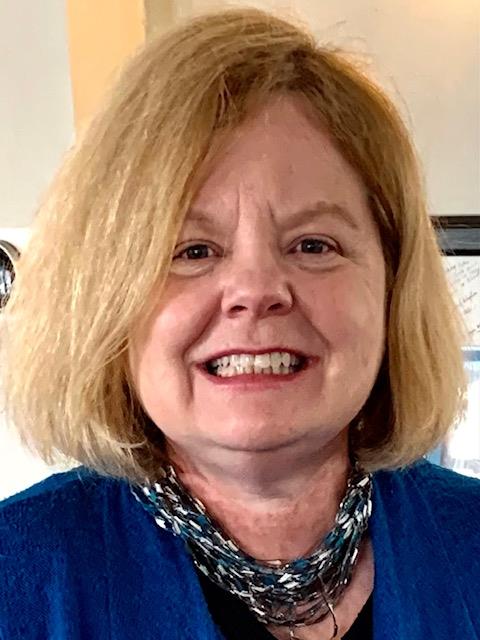
Collection
Picturebooks and Young Children: Potential, Power, and Practices
- Submission status
- Closed
Picturebooks hold a special pride of place in the learning, literacy, and lives of young children. While all forms of children’s literature have the potential to impact young readers, picturebooks offer a multimodal format that includes both print and visual texts and which offer readers opportunities to construct meaning based on each of these modalities, as well as from the dynamic interplay between these modes (Arizpe, 2021; Kachorsky, Moses, Serafini & Hoeltling, 2017; Nodelman, 2017; Salisbury & Styles, 2020; Wolfenbarger & Sipe, 2007). Reading picturebooks involves navigating an “intricate dance” of words and images with a meaning that is more complex than a sum of its parts (Sipe, 2011, p. 232).
Though enjoyed by many, picturebooks are typically aimed at an audience of young children. As resources, they are compact, aesthetically appealing, literature-rich, and reasonably available, and hold an appeal for a broad range of developmental levels and interests. These texts can serve as an introduction to the worlds of literature and art, as springboards for rich talk and interactions, as the focus of important social bonding experiences, and as effective pedagogical tools for life and learning (Acer & Gözen, 2020; Jalongo, 2004; Sipe, 2008; Wanless & Crawford 2016). Picturebooks, like the broader expanse of children’s literature, can invite reflection and provide illumination. Powerful books can function as mirrors, windows, and sliding glass doors (Sims Bishop, 1990); that is, picturebooks can offer stories that reflect a child’s own life, that give them glimpses into the worlds of others; and in some cases, allow readers to slip through a portal that will transport them to new places and experiences. Many picturebooks offer children invitations to explore complex and challenging topics (Arizpe, 2021; Crawford, Roberts & Zygouris-Coe, 2019; Wiseman, Vehabovic, & Jones, 2019). Educators and other caring adults can support children’s transactions with picturebooks in supportive, developmentally appropriate, and impactful ways.
For this special issue of Early Childhood Education Journal, we invite manuscripts that focus on the theme, Picturebooks and Young Children: Potential, Power, and Practices. We seek a broad range of manuscripts that highlight the important aspects of picturebooks and the readings and pedagogy that surround them in the lives of young children, birth through age 8. We invite authors to provide overviews of the ways picturebooks are being used in state of the art practices around the world.
Editors
-
Patricia A. Crawford
Patricia A. Crawford is an associate professor in the Department of Teaching, Learning, and Leading, where she works in the Early Childhood Education and and Language, Literacy, and Culture programs. She teaches a variety of courses related to literacy and learning, and mentors graduate students who are aspiring researchers and teacher educators. She also serves as coordinator of the Early Childhood Education program and is a faculty coordinator for the Pitt in Florence Early Childhood Education Study Abroad Progran (www.abroad.pitt.edu/florenceed).
-
Sherron Killingsworth Roberts
Sherron Killingsworth Roberts serves as the Heintzelman Literature Scholar at UCF. Her research examines literacy as social practice, innovative pedagogy, and literary content analyses. Roberts received her doctorate from University of Arkansas where she was one of five, campus-wide Dissertation Fellows, after teaching mostly sixth grade in a middle school setting. Prior to coming to University of Central Florida in 1998, Sherron taught reading and language arts methods at Columbia College and at Iowa State University where she was an assistant professor.
-
Jan Lacina
Dr. Jan Lacina holds the Bezos Family Foundation Endowed Chair in Early Childhood Education. She has been employed at TCU since 2005. Dr. Lacina’s teaching and scholarship include the intersection of literacy learning, early childhood/elementary education, and teacher education. Dr. Lacina has served in numerous leadership positions within higher education, such as Interim Dean, Early Childhood Program Coordinator, and Post Baccalaureate Graduate Program Coordinator. Since 2011, she has served as Associate Dean for Graduate Studies in TCU’s College of Education.
Articles (29 in this collection)
-

-
When the Sun is Out of the Picture: Exploring a Variation Theory Key to Children’s Imagination in a Picturebook Reading Activity
Authors
- Anna Backman
- Content type: OriginalPaper
- Open Access
- Published: 24 November 2023

-
The Relationship Between Shared Picturebook Reading and Language Development in Young Children
Authors
- Sheila Combs
- Kristina N. Higgins
- Content type: OriginalPaper
- Published: 21 November 2023

-
A Content Analysis of Gender Portrayals in Turkish Children’s Picturebooks
Authors
- Ayşenur Peker
- Ayşe İdil Aybars
- Content type: OriginalPaper
- Published: 19 November 2023
-
The Portrayal of Characters with Learning Disabilities in Children’s Picturebooks
Authors
- Leah K. Tiisler
- Kenya E. Wolff
- Content type: OriginalPaper
- Published: 04 November 2023

-
“Reading is Social”: Dialogic Responses to Interactive Read-Alouds with Nonfiction Picturebooks
Authors
- Courtney Shimek
- Content type: OriginalPaper
- Published: 17 October 2023
-
The Reading Builds Empathy Pilot Survey: Picturebooks for Empathy Development
Authors
- Valerie Lorene Williams-Sanchez
- Kyle DeMeo Cook
- Content type: OriginalPaper
- Published: 26 September 2023
-
Content Analysis of Portrayals of Climate Change in Turkish Picturebooks
Authors
- Burcu Sarı Uğurlu
- Sezen Apaydın
- Content type: OriginalPaper
- Published: 21 September 2023

-
Story-Driven Embodied Play: Empowering Young Children’s Agency in Science Learning
Authors
- Kyungjin Cho
- Content type: OriginalPaper
- Published: 19 September 2023
-
Depictions of Refugees in Children’s Picturebooks in Turkey
Authors
- Menşure Alkış Küçükaydın
- Ömer Gökhan Ulum
- Hakan Ulum
- Content type: OriginalPaper
- Published: 07 September 2023
-
Facilitating Critical Discussion of Picturebooks Through Socratic Seminars in a Kindergarten Classroom
Authors (first, second and last of 4)
- Katie Schrodt
- Lydia Smith
- Jiawen Liu
- Content type: OriginalPaper
- Published: 04 September 2023
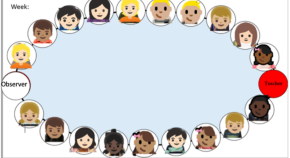
-
Who Gets to Decide? A Case Study Exploring Tennessee’s Early Childhood Literacy Initiatives
Authors
- Bethany Parker
- Amy Wilson-Ratliff
- Content type: OriginalPaper
- Published: 03 September 2023
-
What’s the Story with Storytime?: An Examination of Preschool Teachers’ Drama-Based and Shared Reading Practices During Picturebook Read-Aloud
Authors (first, second and last of 8)
- Annette C. Schmidt
- Melissa Pierce-Rivera
- M. Adelaida Restrepo
- Content type: OriginalPaper
- Published: 30 August 2023

-
Making Waves: Early Childhood Teachers’ Experiences with Multicultural Picturebooks to Promote Equitable Classrooms
Authors
- Courtney Hayes
- Grace Francis
- Content type: OriginalPaper
- Published: 28 August 2023
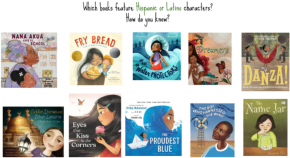
-
Enhancing Swedish Toddlers’ Learning Opportunities Through Interactions with Pictures and Narrative Designed for Numerical Learning Purposes
Authors
- Camilla Björklund
- Hanna Palmér
- Content type: OriginalPaper
- Open Access
- Published: 19 August 2023
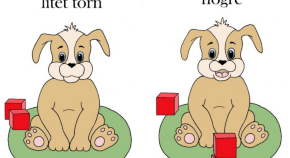
-
Building Classroom Community Through Daily Mantras Inspired by Children’s Picturebooks
Authors
- Erica Rice
- Content type: OriginalPaper
- Published: 14 August 2023

-
The Effect of Interactive Picturebook Reading on Problem-Solving Skills in Preschool: A Quasi-Experiment
Authors
- Joris Van Elsen
- Leen Catrysse
- Sven De Maeyer
- Content type: OriginalPaper
- Published: 24 July 2023
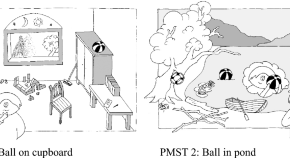
-
Oopses on the Page: A Content Analysis of Children’s Picturebooks Featuring Mistakes
Authors
- Maleka Donaldson
- Selma Benmoussa
- Mia Hwang
- Content type: OriginalPaper
- Published: 19 July 2023
-
Positive Body Image-Related Strategies in Children’s Picturebooks
Authors (first, second and last of 4)
- Tingting Xu
- Yuan He
- Sarah Savoy
- Content type: OriginalPaper
- Published: 15 July 2023
-
A Snapshot of Early Childhood Teachers’ Read-Aloud Selections
Authors (first, second and last of 5)
- Leslie La Croix
- Allison Ward Parsons
- Sehyun Yun
- Content type: OriginalPaper
- Published: 12 July 2023

-
Picturebooks About Disasters: Incorporating Interactive Read-Alouds to Support Young Children’s Social-Emotional Learning
Authors
- Natalie Conrad Barnyak
- Jacqueline M. Myers
- Content type: OriginalPaper
- Published: 04 July 2023
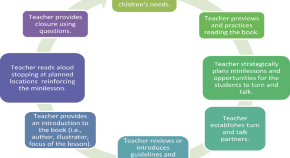
-
Dreamcatchers, Water Protectors, and the Question of Authenticity: Supporting Teachers in Choosing and Using Indigenous Children's Literature
Authors
- April Mattix Foster
- Courtney Hayes
- Content type: OriginalPaper
- Published: 20 June 2023

-
Reading, Writing, and (Anti-)Racist Picturebooks: Reframing Literacy Engagements
Authors
- Annemarie Kaczmarczyk
- Karyn Allee
- Sherron Killingsworth Roberts
- Content type: OriginalPaper
- Published: 13 June 2023
-
Bilingual Students’ Meaning-Making Strategies When Exploring Wordless Picturebooks in Interactive Shared Reading
Authors
- Chaehyun Lee
- Content type: OriginalPaper
- Published: 08 June 2023

-
The Power of Picturebooks to Support Early Elementary Teachers’ Racial Literacy in Communities of Practice: An Example from the 3Rs (Reading, Racial Equity, Relationships)
Authors (first, second and last of 5)
- Caitlin F. Spear
- Jennifer O. Briggs
- Jennifer Ponce-Cori
- Content type: OriginalPaper
- Published: 24 May 2023
-
Shared Picturebook Reading in a Preschool Class: Promoting Narrative Comprehension Through Inferential Talk and Text Difficulty
Authors (first, second and last of 5)
- Ageliki Nicolopoulou
- Elizabeth Hale
- Gina Maurer
- Content type: OriginalPaper
- Published: 17 May 2023
-
Children’s Olfactory Picturebooks: Charting New Trends in Early Childhood Education
Authors
- Natalia Ingebretsen Kucirkova
- Selim Tosun
- Content type: OriginalPaper
- Open Access
- Published: 18 March 2023
-
Kindergarten Children’s Talk About Illustration Techniques in an Almost Wordless Picturebook
Authors
- Sylvia Pantaleo
- Content type: OriginalPaper
- Published: 03 March 2023
-
Picturebooks in the Primary Grades: Representation and the Stories Shared About Who Belongs in STEM
Authors
- Victoria Cardullo
- Megan Burton
- Content type: OriginalPaper
- Published: 31 July 2022


